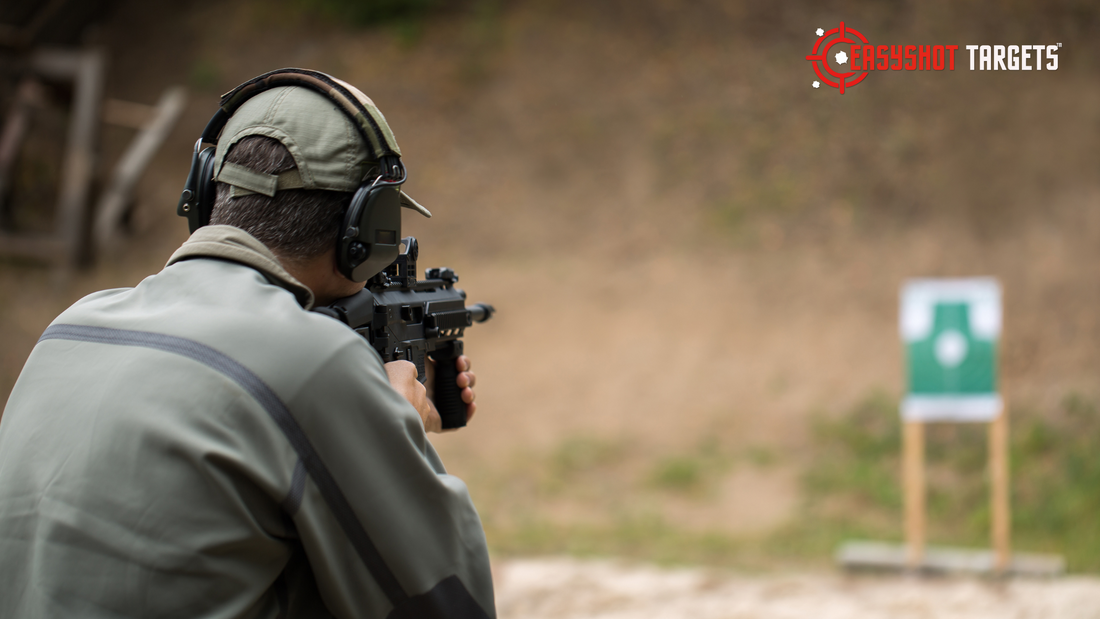If you spend a lot of time at the range and among experienced, skilled shooters or instructors, you'll probably hear the phrase "sight alignment" used frequently. But what is sight alignment, anyway? Read this simple guide to learn the nuts and bolts of sight alignment. Let's get started.
Understanding Sight Alignment

Credit: Envato Elements/ _Orcearo
Sight alignment refers to where the front and rear sights of your gun are placed. It's essential to align your sights correctly if you want to strike your intended target. Sight alignment is especially important while shooting handguns due to the closer distance between the rear and front sights.
How to Attain Correct Sight Alignment

Credit: Envato Elements/ svitlanah
To achieve properly aligned sights, follow the steps below:
- The rear sight is typically a dovetail with a notch, whereas the front sight is typically a square post. To align the two, place your focus on the front sight while holding the firearm at arm's length.
- Adjust the barrel of the gun so that the square front sight post fits into the rear notch and that the tops of the post and the notch are parallel.
- You can now move the barrel a little bit to the left or right once you can see an equal amount of light between each side of the front sight and each side of the rear notch.
What is Sight Picture?

Credit: Envato Elements/ TDyuvbanova
Even though it's crucial, sight alignment only explains half of the puzzle. The other half is the sight picture. When your sights are set to point at the intended target and are aligned, you see what is called a sight picture. In essence, it is what you see when you point at the target.
What Does a Proper Sight Picture Look Like?
Proper sight pictures are ones where the bull's eye of the target is on top of the front sight. Additionally, when you look down your gun at your target, a proper sight picture should show a blurry back sight, a clear front sight, and a fuzzy target.
Types of Sight Pictures
While the above sight picture is a standard for most guns, there are other pictures that can be used to direct your shot:
1) Focal Aiming
If you want to shoot accurately at longer ranges, use a focal sight picture. In order to use focused aiming, you must fix your attention on your front and rear sight and align them with the intended target. When you concentrate on your sights, the target in the distance should be fuzzy but your sight image should be crystal clear.
2) Peripheral Aiming
If you want to shoot accurately mid-range, use peripheral aiming. For peripheral aiming, you should pay attention to your target and raise your sights so they are in line with it. If everything is in order, your peripheral vision should let you confirm that your sights are focused on the intended target.
3) Kinesthetic Aiming
Even though kinesthetic aiming, often known as point shooting, has a very restricted and constrained use, it should be practiced if you intend to carry a gun for self-defense.
The most frequently used technique for firing while using kinesthetic aiming is drawing from the holster and swaying the gun toward your target. Even though you wouldn't generally use this sight picture when practicing at the range, you should at the very least practice it to be prepared.
How to Achieve Proper Sight Alignment and Sight Picture

Credit: Envato Elements/ vlad_star
Achieving proper sight alignment and sight picture is difficult. The best method to develop these skills so that aiming comes effortlessly to you is through dry fire practice. Even while it requires some effort, if you get the hang of it, you'll see an improvement in your performance. Then, practice shooting at the range with shooting targets like those from EasyShot.
Summary
By understanding what is sight alignment and sight picture, you can direct the bullet in the desired direction. Once you identify what went wrong and the reason why your bullet did not land where you had expected it to, you should be well on your way to becoming a skilled shooter.

